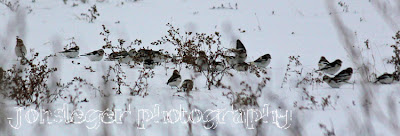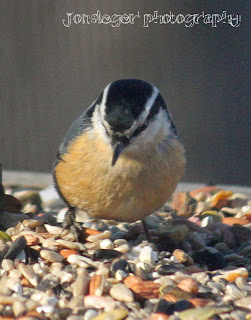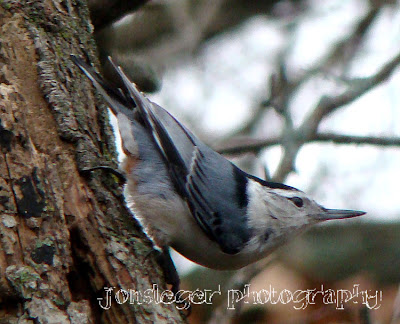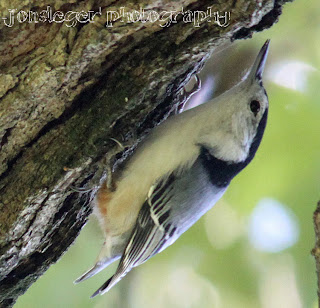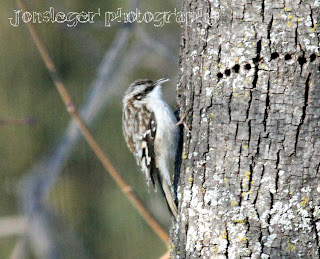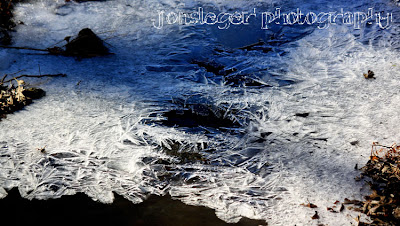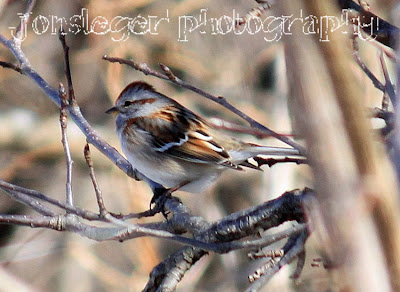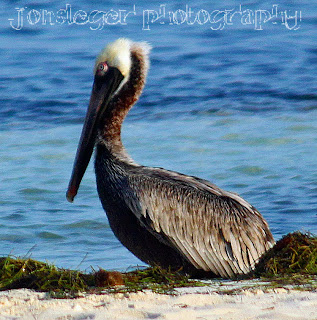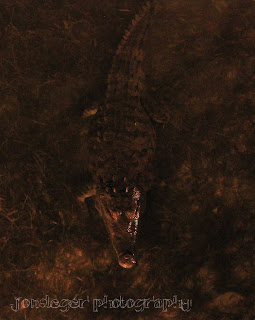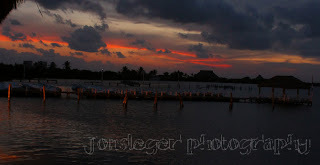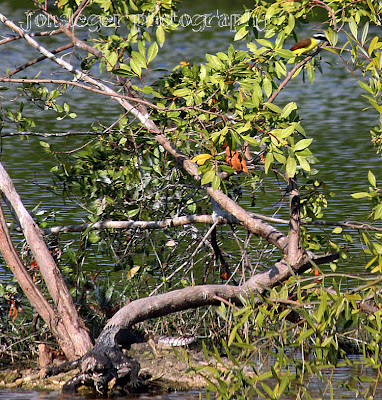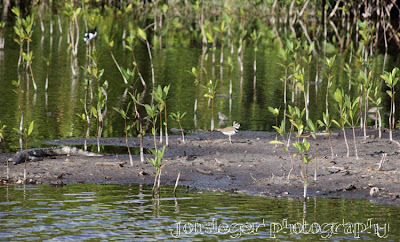 |
| In the dead of winter, sunset light glints off the snow at Blackhawk Springs Forest Preserve; 12/28/10. |
In winter months (November through March), there are many birds that call Northern Illinois their home away from home. I'll divide these winter birds into three categories:
Winter Birds that I regularily see:
American Tree Sparrows, Red-breasted Nuthatches*, Snow Buntings, Bald Eagles, Ring-billed Gulls, Herring Gulls, Brown Creepers, Slate-colored Dark-eyed Juncos*. (*=Abundant)
Winter Birds that I occaissionally see:
Winter Wrens, White-throated Sparrows, White-crowned Sparrows, Golden-crowned Kinglets, Rusty Blackbirds, and Purple Finches.
Winter Birds that migrate to our area that I very seldom or never see are:
Trumpeter Swans, Common Goldeneyes, Buffleheads, Common Mergansers, Rough-legged Hawks, Long-eared and Short-eared Owls, Northern Shrikes, Gloden-crowned Kinglets, Lapland Longspurs, Evening Grosbeaks, Pine Siskins, and Common Redpolls.
 |
| Two male House Finches enjoying the safflower seed, Rockford, IL; 1/5/11. |
Although House Finches pretty much are ubiquitous from coast to coast, the Canadian border to the Mexican border year round, I only see them in our neighbrhood in winter. They flock to my feeders (they especially like the safflower seed - although they'll eat any of the seed I put out) in winter and the male's red head, breast and back are a great contrast to the drab colorless winter environment (Above). But from April to November, although they live here, I do not see them at all.
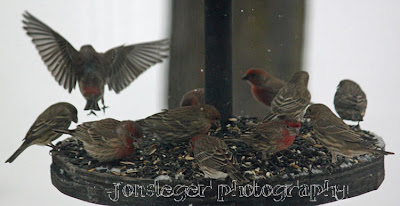 |
| House Finches flock to my backyard feeder, Rockford, IL; 12/4/10. |
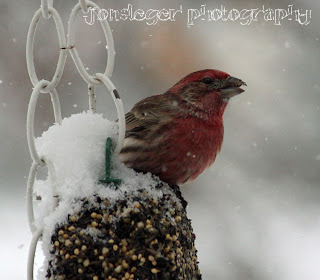 |
| A male House Finch's red breast and head are a bright spot in the white environment of winter, Rockford, IL; 2/9/10. |
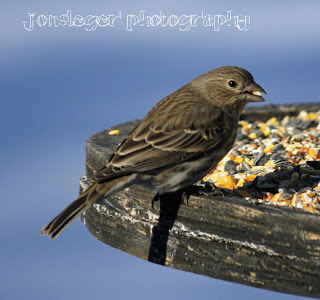 |
| A female House Finch is not as colorful as its male counterpart, Rockford, IL; |
 |
| A male and female House Finch, Rockford, IL; 11/7/09. |
 |
| A House Finch looking for a perch to land on the feeder, Rockford, IL; 10/25/09. |




